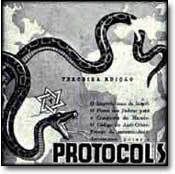For two weeks in the summer of 1982, U.S. and Soviet jets
dueled in the skies over Lebanon in one of the largest aerial dogfights
since World War II. The pilots were Israelis and Syrians. In a classic
Cold War proxy battle, U.S.-backed Israel humiliated Soviet-backed
Syria, downing 86 MiGs without a single loss. It was the finest example
of Israel’s strategic value to the United States: In return for the
planes, Israel served as America’s shield and a model for the
superiority of American-made weaponry.
In the summer of 2013, American-made Israeli jets are humiliating
Syria once again. Israel’s ability to evade sophisticated Russian-made
anti-aircraft systems to bomb Syrian territory
over the past week does not just signal a possible expansion of Syria’s
civil war or the latest salvo in the struggle with Iran. It also
suggests that the U.S.-Israel alliance may be returning to its Cold War
roots—which is good news for both countries.
The strategic bond between the United States and Israel did not begin
with the Jewish state’s founding in 1948. Many U.S. officials cautioned
against becoming too close with the nascent state, which identified
itself as a socialist country, had diplomatic support within the Soviet
bloc, and was hated by America’s Arab oil suppliers. As the United
States attempted to build a regional security alliance to contain Soviet
power in the Middle East, President Dwight Eisenhower pressured Israel
to cede a large portion of the Negev Desert so that Egypt and Jordan
could link borders. He also forced Israel to abort its military
incursion into Egypt to seize the Suez Canal in concert with Britain and
France.
But as Cairo and other Arab capitals increasingly sided with Moscow,
Washington began to see Jerusalem as a possible bulwark against Soviet
influence. In 1962, John F. Kennedy told Golda Meir, then Israel’s
foreign minister, “The United States has a special relationship with
Israel in the Middle East really comparable only to what it has with
Britain over a wide range of world affairs”—a statement that wasn’t true
at the time, but did turn out to be prophetic. The Kennedy and Johnson
Administrations generally ignored Israel’s development of nuclear
weapons during the 1960s and sent moderate amounts of small arms that
helped the Jewish state smash Arab armies fighting with Soviet weapons
in the Six Day War.
Israel’s victory—largely achieved with French-made jets and homemade
Kfir fighters rather than American weapons—suggested the benefits of a
strategic alliance with Israel. After the Six Day War, the United States
would supply the advanced weapons and Israel would do the fighting.
Over the course of the 1970s and 1980s, Israel rescued the
U.S.-supported Hashemite monarchy in Jordan from a Syrian invasion,
embarrassed the U.S.S.R. by downing Soviet planes over the Suez Canal,
and opened its port in Haifa to the U.S. Sixth Fleet to counter the
establishment of a Soviet submarine base in Syria. Despite several
points of tension, such as U.S. displeasure with Israel’s full-scale
invasion of Lebanon in 1982, the partnership between the two countries
became a key component of Washington’s Cold War strategy in the Eastern
Mediterranean and a powerful advertisement for high-end American arms.
But the end of the Cold War shook the strategic foundations of the
U.S.-Israel relationship. No longer worried about the Soviet threat,
U.S. officials began to see Israel as an obstacle to building relations
with erstwhile enemies in the Arab World. The rise of Palestinian
resistance to Israel’s occupation of the West Bank furthered this view.
Many in Washington embraced the notion that the Israeli-Palestinian
conflict drove anti-American resentment across the Middle East and saw
Israel as a chief obstacle to regional harmony. President George H.W.
Bush and his Secretary of State James Baker tried to force Israel to
make peace with the PLO at the Madrid Peace Conference in the hopes of
winning friends among the Arabs. When the United States cobbled together
a coalition of Arab nations against Saddam Hussein, it sought
desperately to keep Israel out of the war, suggesting that it saw the
Jewish state as a strategic burden rather than an asset. The signing of
the Oslo Accords on the White House lawn and subsequent negotiations at
Wye and Camp David seemed to suggest that Israel’s chief value to the
United States was as a source of prestige for presidents who could
deliver that most enchanting diplomatic prize, Middle East peace.
The 2006 war between Israel and Hezbollah gave the Jewish state its
first real opportunity since the end of the Cold War to quiet doubters
by applying the classic alliance model. In a new Middle Eastern proxy
struggle, this time between the United States and Iran, Israel sought to
crush Hezbollah. Yet it did not perform up to its Cold War standard. In
a bumbling operation, it fought the Lebanese terrorist group to what
many saw as a draw, causing then-U.S. Secretary of State Condoleezza
Rice, among others, to lose faith in its value as an arm of U.S.
deterrence in the region. More
Monday, 13 May 2013
Why the U.S.-Israel alliance may be returning to its Cold War roots
Posted @
18:13
![]()
Subscribe to:
Post Comments (Atom)
![[9_10_s22.jpg]](https://blogger.googleusercontent.com/img/b/R29vZ2xl/AVvXsEjTXnQay9wzz0E6nVHrVhaHKoq_zYXDqZjijHlNDQzj90MZzInrCuVX4ciFYCiBfZ7lhlgr2bBhhnl7ddWbhdih5JbXjQYbA605TNyiq046bQqjG2A4S-nHTmh1VBTQSG6tmc23wq47QQ/s1600/9_10_s22.jpg)




No comments:
Post a Comment